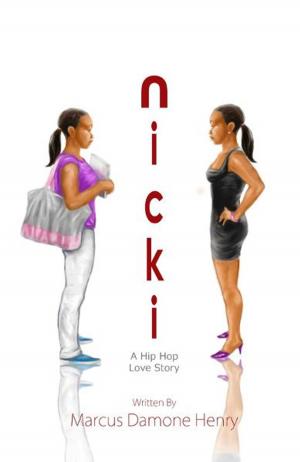Tin Noses, Tin Roses: Love Stories from World War I
Nonfiction, History, Americas, United States, 20th Century| Author: | Susan Anthony-Tolbert | ISBN: | 9781543925692 |
| Publisher: | BookBaby | Publication: | February 14, 2018 |
| Imprint: | BookBaby | Language: | English |
| Author: | Susan Anthony-Tolbert |
| ISBN: | 9781543925692 |
| Publisher: | BookBaby |
| Publication: | February 14, 2018 |
| Imprint: | BookBaby |
| Language: | English |
Though the story of the “Tin Noses, Tin Roses: Love Stories from World War I” is framed against the awesome facial disfigurements that some soldiers faced from their combat with the enemy, it is not a sad or depressing account. It is a love story, actual several love stories, across the times and events from World War I through World War II. Even war, disfigurements and distance cannot diminish true love. It is also the tale of finding one’s passion in life ---- whatever that passion ----whether that is a passion for medicine or music or art ---- and pursing that passion fully. It describes how sometimes when one discipline like medicine can go no farther to repair what has been broken in a human being, another discipline like art or sculpture or casting can be used to make life better. In the early days of World War I, artist and sculptor, Francis Derwent Wood, founder of the Tin Noses Shop, said it best: “My work begins where the work of the surgeon is completed. My cases are generally extreme cases that plastic surgery has ----had to abandon …” Any shrapnel wound, unlike a straight line wound from a bullet, consisted of twisted metal shards that could rip a face off. The ‘tin noses’ of the WW I era were constructed to fill in/cover whatever parts of the human face that had been blown away by shrapnel and which could not be totally repaired by surgery. And so, this is also the story of those little masks of tin that improved the lives of wounded soldiers ---- sometimes only until more surgery could be completed, sometimes until time led to an acceptance of the disfigurement and other times as a lifelong protection against cruel stares and comments. The skill needed to make those ‘tin noses’ could easily be used to make the less practical but beautiful, ‘tin roses.’ In order to better understand the story of the Tin Noses, a little background in hospitals during the war is presented. The reader will find information on field hospitals, evacuation hospitals and base hospitals. There were base hospitals throughout France. In fact, the Medical Department of the U.S. Army lists approximately 138 Base Hospitals. Some of these were located within the United States to care for soldiers who arrived home. Not all Base Hospitals operated in France. Since the hero of the story and his family are from Virginia, specifically the Northern Neck, the Base Hospital that would have played an important part in their lives is Base Hospital #18 at Bazoilles-sur-Meuse at least initially. This hospital was formed from Johns Hopkins Hospital in Baltimore, Maryland and found a physical home at Bazoilles to offer medical services during the war. However, it was established in Baltimore from volunteer doctors, student doctors, nurses, cooks, workers, carpenters etc. They were all transported as a group on the Finland to France. Many of the Base Hospitals remained as functional units until well into 1919 after the war had ended. These Base Hospitals were the last stop before a soldier was sent home. The main characters in this book are all fictional and have sprung from the imagination of the author. The only non-fictional people in this book are Francis Derwent Wood, Anna Coleman Ladd, and Dr. Harold Gillies. These historical figures, who did so much for the facially disfigured soldiers of World War I, are mentioned and celebrated throughout the book, as well they should be. They give the story context and historical significance. It must be emphasized that the fictional characters are just that: Fictional! They have no counterparts in real life and are completely from the imagination of the author. Any similarities of these characters in “Tin Noses, Tin Roses: Love Stories from World War I” to actual people is accidental and co-incidental.
Though the story of the “Tin Noses, Tin Roses: Love Stories from World War I” is framed against the awesome facial disfigurements that some soldiers faced from their combat with the enemy, it is not a sad or depressing account. It is a love story, actual several love stories, across the times and events from World War I through World War II. Even war, disfigurements and distance cannot diminish true love. It is also the tale of finding one’s passion in life ---- whatever that passion ----whether that is a passion for medicine or music or art ---- and pursing that passion fully. It describes how sometimes when one discipline like medicine can go no farther to repair what has been broken in a human being, another discipline like art or sculpture or casting can be used to make life better. In the early days of World War I, artist and sculptor, Francis Derwent Wood, founder of the Tin Noses Shop, said it best: “My work begins where the work of the surgeon is completed. My cases are generally extreme cases that plastic surgery has ----had to abandon …” Any shrapnel wound, unlike a straight line wound from a bullet, consisted of twisted metal shards that could rip a face off. The ‘tin noses’ of the WW I era were constructed to fill in/cover whatever parts of the human face that had been blown away by shrapnel and which could not be totally repaired by surgery. And so, this is also the story of those little masks of tin that improved the lives of wounded soldiers ---- sometimes only until more surgery could be completed, sometimes until time led to an acceptance of the disfigurement and other times as a lifelong protection against cruel stares and comments. The skill needed to make those ‘tin noses’ could easily be used to make the less practical but beautiful, ‘tin roses.’ In order to better understand the story of the Tin Noses, a little background in hospitals during the war is presented. The reader will find information on field hospitals, evacuation hospitals and base hospitals. There were base hospitals throughout France. In fact, the Medical Department of the U.S. Army lists approximately 138 Base Hospitals. Some of these were located within the United States to care for soldiers who arrived home. Not all Base Hospitals operated in France. Since the hero of the story and his family are from Virginia, specifically the Northern Neck, the Base Hospital that would have played an important part in their lives is Base Hospital #18 at Bazoilles-sur-Meuse at least initially. This hospital was formed from Johns Hopkins Hospital in Baltimore, Maryland and found a physical home at Bazoilles to offer medical services during the war. However, it was established in Baltimore from volunteer doctors, student doctors, nurses, cooks, workers, carpenters etc. They were all transported as a group on the Finland to France. Many of the Base Hospitals remained as functional units until well into 1919 after the war had ended. These Base Hospitals were the last stop before a soldier was sent home. The main characters in this book are all fictional and have sprung from the imagination of the author. The only non-fictional people in this book are Francis Derwent Wood, Anna Coleman Ladd, and Dr. Harold Gillies. These historical figures, who did so much for the facially disfigured soldiers of World War I, are mentioned and celebrated throughout the book, as well they should be. They give the story context and historical significance. It must be emphasized that the fictional characters are just that: Fictional! They have no counterparts in real life and are completely from the imagination of the author. Any similarities of these characters in “Tin Noses, Tin Roses: Love Stories from World War I” to actual people is accidental and co-incidental.















